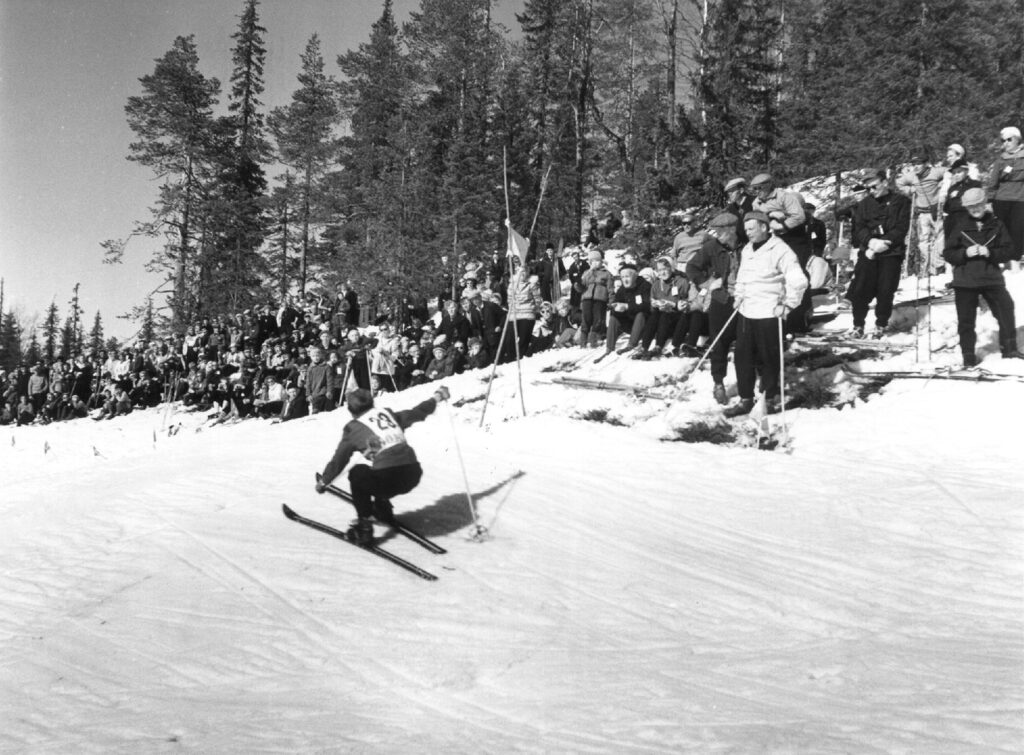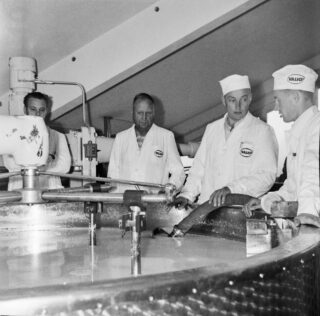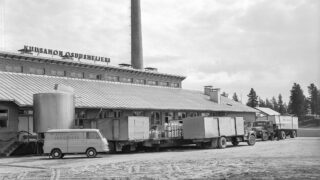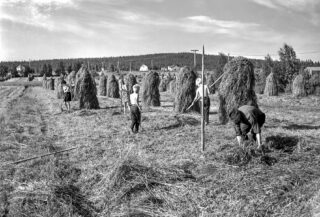The worst depression was over at the end of the 1970s in Kuusamo. The massive municipal hall completed at that time, the library built next to it, and the state office building and fire station belonging to the same red brick complex can be considered a hallmark of the new era. Optimism was strengthened by the reconstruction monument of sculptor Terho Saki erected in front of the building. People believed in the growth of public power and its ability to create new wealth for the community. Vocational training was expanded, especially in commercial and office work fields, as well as service fields.
Faith in the future was increased by the rise of tourism in Kuusamo as a direct industry. In the 1980s, the Ruka ski centre grew to new dimensions. With its numerous slopes, ski lifts, hotels, and restaurants, it became a holiday destination for hundreds of thousands of winter tourists and at the same time a workplace for many people in Kuusamo.
However, Kuusamo’s other foot was still firmly attached to its own soil and its natural resources. Pölkky Oy’s wood processing plant grew into a large company in the 1980s. Until the 1960s, the use of Kuusamo’s forest resources had mostly been the export of raw wood to large factories on the coast of Gulf of Bothnia or the use of sawn timber for the reconstruction of its own villages. The development of Pölkky opened the way for the wood from Kuusamo directly to the world market, whereupon the additional benefit obtained from the processing benefited the workers in the wood and forestry industry and the entire parish.
The number of farms in Kuusamo fell sharply after the 1970s. However, milk production increased slightly as the largest farms increased livestock. Small farms stopped operating and, only on few farms, the new generation continued farming. Finland’s accession to the European Union accelerated the transition to larger farm sizes, even herds of several hundred head.
The Osuusmeijeri dairy also experienced many difficult years while trying to adapt to the change process, which forced almost all Northern Finland’s dairies to cease operations. In Kuusamo, however, it was mostly successful by focusing on cheese production and finding an operating model that met the demand.



